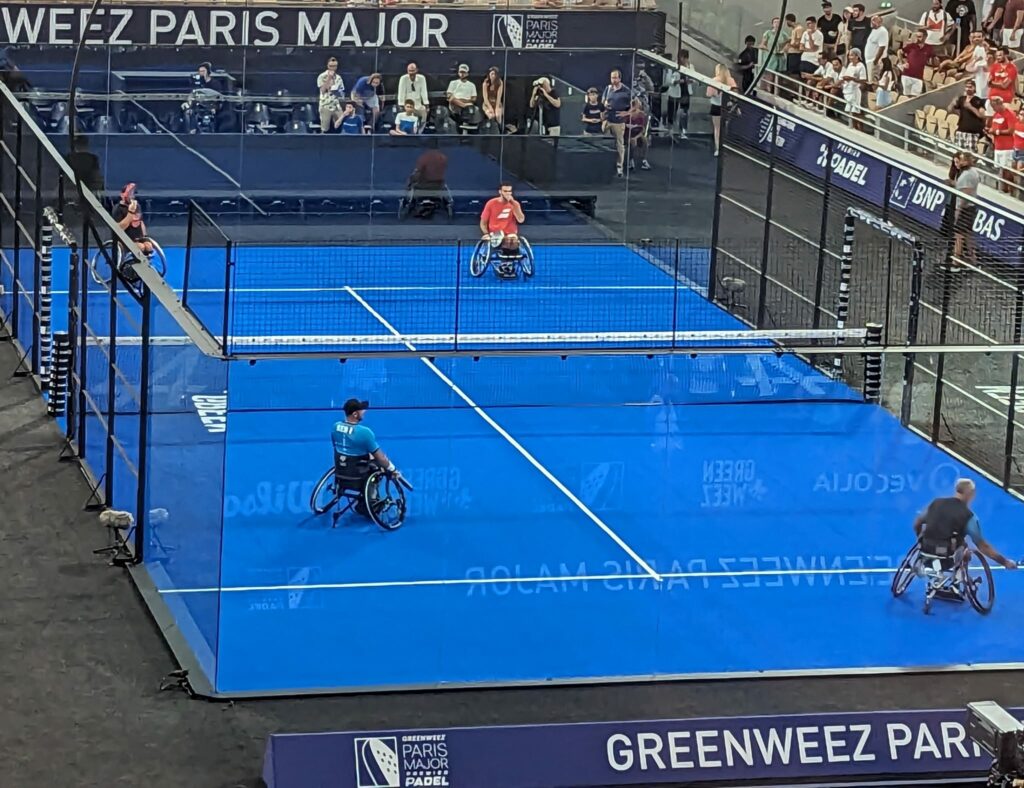Wheelchair Padel
Wheelchair padel, also known as adapted padel, is a sport that has been gaining popularity in recent years. It is a modified version of traditional padel, a racquet sport that originated in Mexico and is similar to tennis, but played on a smaller court with walls.
In wheelchair padel, the court is also smaller and players use specially designed wheelchairs to move around the court. The rules are similar to traditional padel, with two players on each team trying to hit the ball over the net and onto the opponent’s side of the court.
Wheelchair padel can be played at a high level of performance, with athletes competing in national and international tournaments. The sport requires a combination of physical skill, strategy, and mental focus, and can be a great way for people with disabilities to stay active and competitive.
As with any sport, wheelchair padel requires proper training, coaching, and equipment to reach a high level of performance. Athletes must also pay attention to their nutrition and conditioning to maintain their physical fitness and avoid injuries.
Overall, wheelchair padel can be a great option for people with disabilities who are interested in competitive sports and looking for a way to stay active and engaged. As the sport continues to grow in popularity, we may see more opportunities for high-performance athletes to compete at the highest levels.
Wheelchair Padel – The Rules
Here are some technical rules for wheelchair padel:
- Court dimensions: The wheelchair padel court should measure 10 meters in width and 20 meters in length. The net should be 0.88 meters high at the sides and 0.92 meters high in the center.
- Wheelchair use: All players must use a wheelchair during the game. The wheelchair should be manually operated and not have any modifications that could provide an unfair advantage.
- Serve: The serve must be made underhand and from behind the baseline. The ball should bounce on the server’s side of the court and then over the net to the receiving side.
- Return: The ball must be returned before it bounces twice on the receiving side of the court. The return can be made either forehand or backhand.
- Volleys: Volleys are allowed in wheelchair padel, but the player must be seated in the wheelchair when hitting the ball. The ball must be hit before it bounces on the player’s side of the court.
- Scoring: Scoring in wheelchair padel is the same as traditional padel, with games played to 6, and a tiebreaker to 7 if necessary. A player or team must win by two points to win the game.
- Faults: Faults in wheelchair padel include serving out of bounds, failing to hit the ball over the net, hitting the ball out of bounds, hitting the ball twice in a row, and not being seated in the wheelchair while hitting a volley.
These are some of the basic technical rules of wheelchair padel. It’s important to note that there may be additional rules or adaptations specific to certain tournaments or competitions.
We are building a team….
As padel takes off around the globe, so too is wheelchair padel. We want to support the growth of Wheelchair padel, at all levels, here in Ireland. For anyone interested in getting involved, either at a high-performance level or at an amateur or social level, please email info@padelfederation.ie





